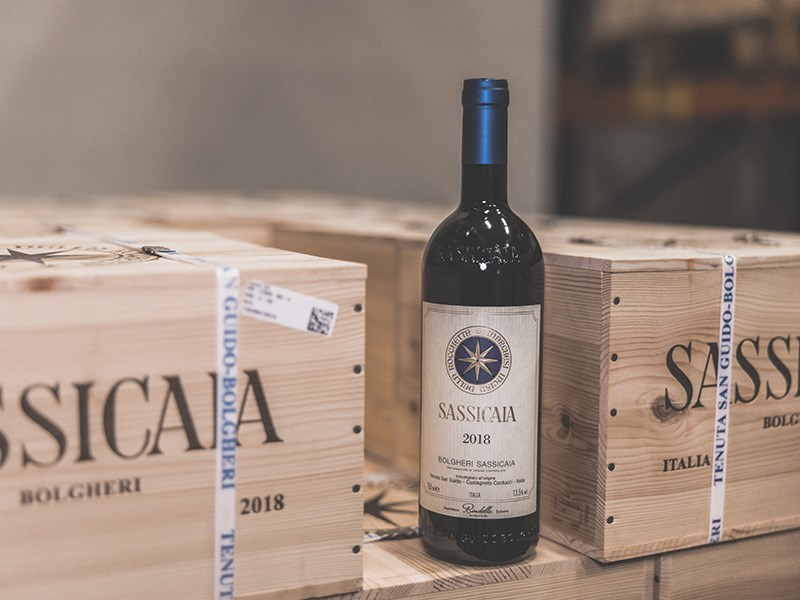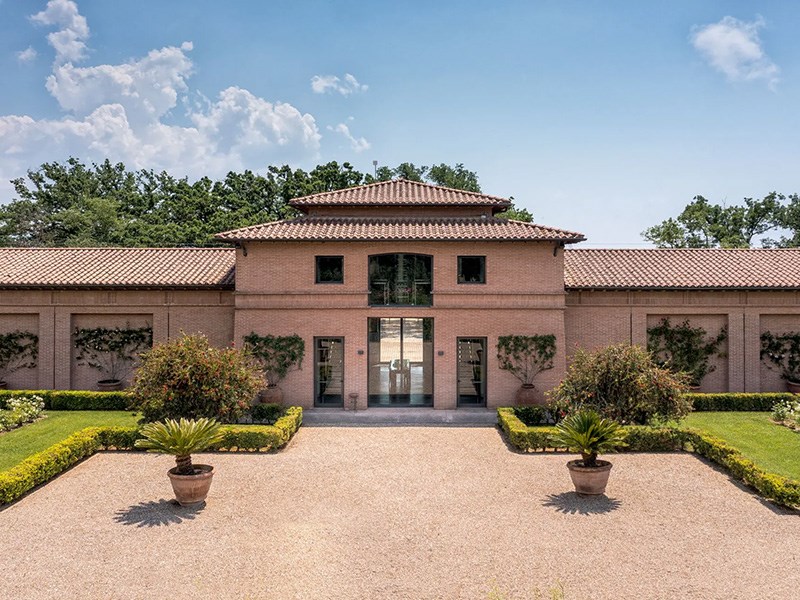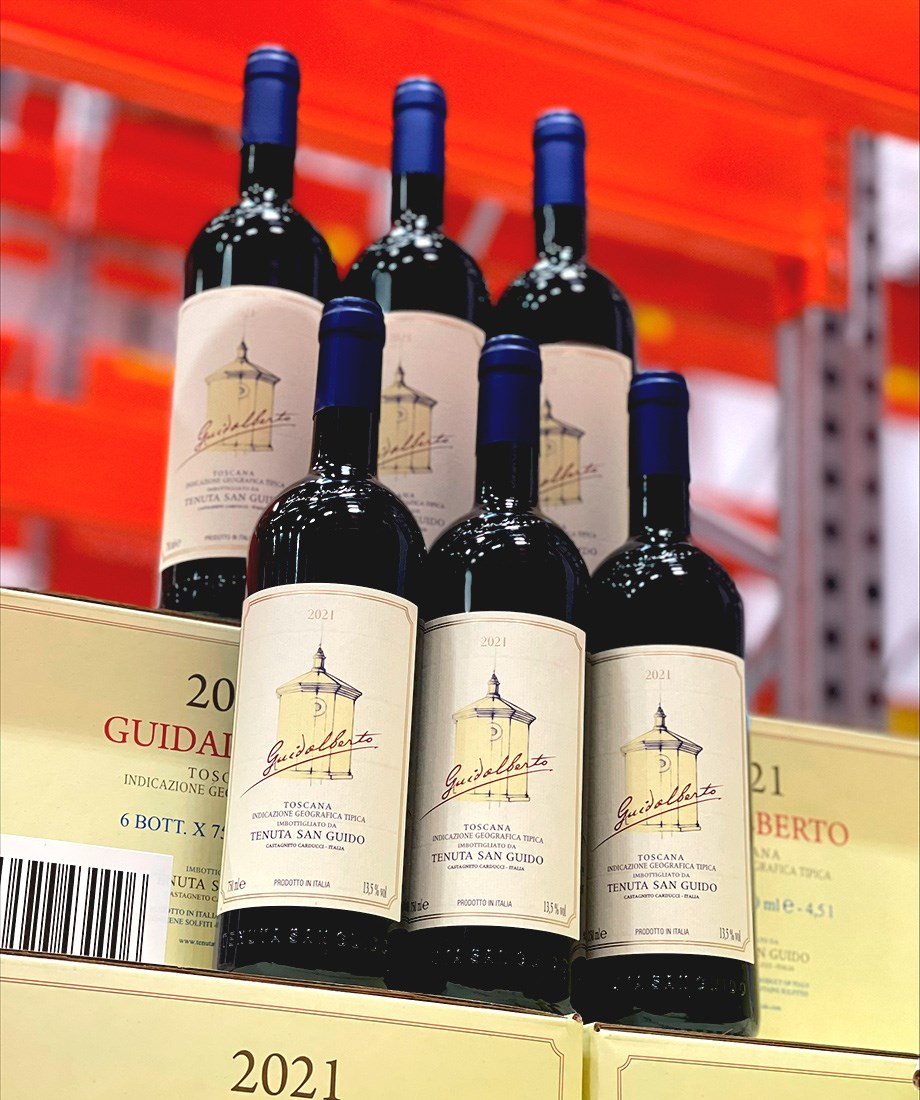Article - RareWine Academy
Tenuta San Guido & Sassicaia Revolutionized An Entire Wine Country
During wartime, a Francophile Italian had to take Bordeaux to Tuscany and create hobby wine for his own consumption. Hobby wine turned into a global success. Read the story...
”We are all children of Sassicaia […] “It is the inspiration for all Italian wine — past, present and future.”
Michele Satta (Michele Satta Winery) said the above to Monica Larner of Wine Advocate, and it is a statement Larner has not been able to let go of. Sassicaia is a wine whose name resonates deeper, higher, and more quality-rich than the name of the house behind it. The name of the house is actually Tenuta San Guido, but it is the wine, Sassicaia, that has boldly revolutionised an entire wine country.
The story of Tenuta San Guido and Sassicaia is the story of pioneering spirit and unwavering commitment to quality. It is the story of a Francophile man who was seduced by Bordeaux and had to create his own Bordeaux wine on Italian ground - what would become a legendary Cabernet blend.
Tenuta San Guido: The Beginning of Greatness
Mario Incisa della Rocchetta was born in Rome in 1889. But his passion for farming led him to the Faculty of Agriculture in Pisa. However, another passion would prove just as - if not more - fateful and decisive for Mario's future: The future of Italy itself. In addition to his passion for agriculture, Mario also had a passion for horses, so he brought his beloved horse to Pisa and began to frequent the local thoroughbred horse community.
It was in this group that he met Clarice della Gherardesca, whom he married in 1930. The couple decided to move back to Rome to fulfil a shared dream of breeding racehorses. But in the early 1940s, Clarice inherited a property in Bolgheri that had been in the family for more than 1200 years, and the couple decided to move back to Tuscany to manage the property named after Clarice's ancestor Guido della Gherardesca, hence the name of the property: Tenuta San Guido. And so the start of greatness was born.
The Trinity of Wildlife, Stud Farm and Winemaking at Tenuta San Guido
Although Tenuta San Guido is mostly known for their exceptional and rightful wine icon Sassicaia, it is impossible to tell the story of the house without also giving voice to both horses and wildlife.
Federico Tesio and Ribot were two crucial factors in Tenuta San Guido's current status as a world-renowned stud farm. Frederico Tesio was an Italian breeder of thoroughbred racehorses and is today recognised as a unique genius in the world of breeding - and indeed the greatest individual in the history of Italian racing. In 1932, Tesio, Clarice and Mario met and it was not long before they became business partners - and they began the search for the perfect horse, which they found.
The horse's name is "Ribot" and it is still remembered as one of the strongest horses in the world. When Clarice and Mario took over Tenuta San Guido, they also created the Razza Dormello Olgiata estate, where "Ribot" and other horses were trained to greatness. The property still exists today and houses more than 100 horses. And although the glory days have faded, the stud farm is still very much a part of Tenuta San Guido, although the wine has received the most attention.
As well as being an avid horse enthusiast, Mario also had a love of migratory birds, so it was natural for the couple to dedicate part of their property to a wildlife sanctuary in 1959. Padule di Bolgheri was the name, and later it was formally recognised by the World Wide Fund for Nature (WWF). In 1965 the reserve was graced by a visit from Prince Phillip, and in the same year Mario became president of WWF, where he remained until his death in 1983.
The predominant one, however, is Sassicaia.

Sassicaia: An Ambitious Hobby Project Made World History
Although Mario Incisa della Rocchetta's main focus in the early 1940s was on horses, the acquisition of Tenuta San Guido gave him the opportunity to dedicate himself to an advanced hobby project. Mario was also a Francophile wine lover, but because the world was in the midst of an all-consuming war, it was not easy to get Bourdeaux wines to Tuscany. So he had to make them himself.
As a result, in 1942 he started growing Cabernet Sauvignon and Cabernet Franc on a somewhat unforgiving rocky parcel at Tenuta San Guido. He named the wine Sassicaia after the Italian word "sasso", meaning stone - precisely to cement the wine's origins - on the rocky terroir, which in some ways matches Bordeaux. Like many others at the time, the wine was intended for personal consumption only, so Sassicaia remained within the walls of the house for many years. But what started as a simple, charming experiment would prove to be the first seed planted for global success.
Tenuta San Guido Brings Italian Wine Into The Modern Age
While Mario and Clarice were living in Rome to fulfil their equestrian dream, their son Nicolò was born in 1936 and in 1942, of course, he moved with the family to Bolgheri. He grew up as an essential character in his parents' wine adventure, and although he did not study agriculture like his father, and instead graduated from the University of Geneva with a bachelor's degree in economics, he became a big part of the family business.
Side by side with Mario, Nicolò managed the Tenuta San Guido that the world knows today. And it was Nicolò who managed to persuade his father to distribute Sassicaia outside the four walls of the house. Mario had been reluctant to release Sassicaia because most of Italy was still conservative in their wine preferences. But over the years, Mario realised that the wine only got better with age, and so the first vintage of Sassicaia was released with the 1968 vintage in 1972.
100 Parker Points For Sassicaia & Point-Of-No-Return
The above tasting put Sassicaia in the spotlight, but the most decisive moment came a few years later when Robert Parker, the world's most celebrated wine critic, awarded the magical 100 points to the 1985 Sassicaia - even describing it as "otherworldly". Later, Robert Parker even described the same wine as one of the highlights of his 40-year career: "unquestionably one of the most compelling and dramatic Cabernet Sauvignons I have ever tasted". Getting a seal of approval from one of the most influential wine critics of all time cemented Sassicaia's place at the very top. It was also the first time in history that one of the world's greatest critics rewarded an Italian-produced wine with a perfect 100 points.
Tenuta San Guido did not sit back despite the 100 points. Tenuta San Guido tenaciously continued their winemaking with the goal of perfection, and since the 1985 vintage, it has been giving great scores. In 2018, Wine Spectator named the 2015 Sassicaia the best wine in the world. The 2016 and 2021 vintage also receives 100 points, and is truly setting today's Tuscany on fire.
 Tenuta San Guido (Image: https://www.tenutasanguido.com)
Tenuta San Guido (Image: https://www.tenutasanguido.com)
Favourable kinship with the Antinori family
The history of Sassicaia includes a favourable relationship with the famous Italian Antinori family, who were (and still are) firmly established as one of the world's leading wine producers. Therefore, it was an obvious choice to reach out to Antinori and take part in their commercial network when Sassicaia was to be marketed.
In fact, Antinori's oenologist Giacomo Tachis came to Tenuta San Guido and began his collaboration with Nicolò. Tachis made improvements, although he agreed with the unconventional choice of Cabernet. Giacomo Tachis lowered the yield of grapes and then replaced the old large Slavonian barrels with Bordeaux-inspired 'barriques', which turned out to influence the whole area. In Italy, it was (and still is) common practice to use 10,000 litre barrels. The small Bordeaux barriques are typically only 225 litres, so the wine absorbs more flavour from the barrel than the Italian ones. Only 3,000 bottles were released in the first vintage, and the 1969 + 1973 vintages were not produced. But the collaboration proved rewarding for both parties, and what the world would later come to know as the first Supertoscan was presented to the world.
Sassicaia Really Put Italy On The World Map
Yes, it is true that Sassicaia did not appeal to the conservative Italian consumers. But that was not a major obstacle for Sassicaia to ensure that Bolgheri would soon be on everyone's lips. In a Decanter blind tasting in London in 1978 (conducted by some of the world's leading wine tasters at the time: Clive Coates, Hugh Johnson and Serena Sutcliffe), the 1972 Sassicaia deservedly gave its competitors a run for their money. It was judged the best of 33 wines from 11 different countries. And parallels were even drawn to a tasting in Paris a few years earlier, where Californian wines won over wines from Bordeaux.
Those who previously did not care much for the Tuscan deviant now began to look with interest towards Tenuta San Guido and Sassicaia.
Sassicaia Was 'Vino Da Tavola': Simple Table Wine With Worldwide Success
There was nothing inherently wrong with using Cabernet Sauvignon over the more traditional Sangiovese grape. But by deviating from the norm, Tenuta San Guido failed to meet the quality requirements for wine production in the area. DOCG (Denominazione di Origine Controllata e Garantita) is the highest designation for Italian wines, while (DOC) has less strict guidelines. Paradoxically, this meant that Sassicaia did not fulfil the requirements for wine production in the area and could not be classified as a DOCG or even a DOC.
Since Sassicaia did not fit into the above classifications, it was labelled as a so-called 'Vino da Tavola', which refers to it being a simple table wine. At the time, it was not allowed to blend international grape varieties with the local Sangiovese grape. So a simple table wine became a global success, and the Americans in particular loved the new term and named it Super Tuscan.
But even traditional Italy could not ignore Sassicaia's popularity, and it was indefensible that one of the most popular and expensive Italian wines did not belong in the finest category. So in 1994, Sassicaia was given its very own DOC classification.
Sassicaia Took The First Step For The Super Tuscans
The term 'Super Tuscan' is well known around the world today, and the best way to define a Super Tuscan is by their use of international grape varieties - and of course, the wine must be from Tuscany. And while blending grape varieties is commonplace today, this was far from the case before Sassicaia took the first step, earning them the title of the world's first and original Super Tuscan, although several other producers also experimented with the norms during the same period.
The Antinori family were, of course, some of the first to taste the groundbreaking Sassicaia while it was still only intended for family and friends. And while Mario was refining Sassicaia, Antinori and Tachis worked in parallel on the now iconic Tignanello, which, like Sassicaia, also went against convention and was aged in French barriques. The first Tignanello was released in 1971 and it turned Chianti on its head. However, Antinori had another trick up his sleeve and in 1978 another Super Tuscan was born in the form of Solaia.
The above three wines are all characterised as original Supertuscans, and the last two, out of a total of 5, actually originate from the family. Mario's nephew Lodovico Antinori presented his Ornellaia in 1985, followed by the now extremely sought-after Masseto. Thus, Sassicaia set the first Supertuscan footprint, which was subsequently followed by Tignanello, Ornellaia, Solaia and Masseto: the five original Supertuscans.
And although these originals were labelled 'table wines', it soon became clear that they were superior to many of their traditional Tuscan competitors.
Sassicaia - Global Fame And Target For Counterfeiting
There is no doubt that Sassicaia is one of the most sought-after wines in the world today. And there is no indication that this fact will change in the near future. Which is why it was curious that an entire case of Sassicaia was found abandoned on the side of an Italian road. This led to a year-long search that ended with the Guardia di Finanza (the enforcement arm of Italy's Ministry of Economy and Finance) making an arrest at a department store near Milan in 2020. A warehouse that, during the arrest, was used to counterfeit 1,100 six-piece boxes of Sassicaia with a market value estimated by the authorities at €2 million.
Two were arrested in the warehouse, but in total 11 people were arrested - all involved in the counterfeiting ring that branched out to multiple locations. The arrest also made it possible to intercept a delivery of an order for 41 boxes of 2015 Sassicaia. A box that was packed and ready for delivery. Based on wiretaps of customers in South Korea, China and Russia, investigators were also able to deduce that the counterfeiters had a setup to sell 700 cases of fake wine per month. Fortunately, this did not become a reality.
Luxury wine is subject to counterfeiting, and at Tenuta San Guido they have taken precautions and used anti-counterfeiting systems on the bottles. This allows them to immediately recognise counterfeits - and it was also a necessity in this case.
 2021 Guidalberto
2021 Guidalberto
Latest Additions: Guidalberto And Le Difese
Sassicaia is still going strong, and only time will tell when the journey will stop - and if it will stop at all. And with such a victorious leader, it can be difficult to introduce a new wine. However, it happened when both the 2000 Guidalberto and 2002 Le Difese were released from Tenuta San Guido.
Guidalberto is a blend of Cabernet Sauvignon and Merlot, and was originally intended to be a wine that was both far more affordable in terms of price, and intended to be a far more accessible wine than Sassicaia. Tenuta San Guido wanted to create a wine for a much wider audience. Two decades later, the original idea is still a reality - although recent tastings of the first vintages have revealed that Guidalberto also has a surprisingly good ability to age. Furthermore, work will begin on a new winery dedicated to Guidalberto in 2023, which is expected to be operational by 2025/26. This is to completely separate Guidalberto from Sassicaia.
Le Difese is the latest addition to Tenuta San Guido. It takes its name from the teeth of the wild boar, which is also depicted on the label. It is a wine made from a blend of Cabernet Sauvignon and Sangiovese, and about it Carlo Paoli, San Guido's General Manager, says:
_“A soft and young wine that also welcomes the selection of the masses of Sassicaia and Guialberto. The simple and non-invasive structure, makes it enjoyable from the first moments in the glass.”
Third Generation Raises The Sassicaia Banner
Today, Nicolò Incisa della Rocchetta is the honorary president of Tenuta San Guido, while the third generation of the family of five cousins has now taken over the task of safely, gently, and professionally carrying on the legacy of Tenuta San Guido.
Donna Priscilla Incisa della Rocchetta is the daughter of Nicolò and is responsible for external relations. Travelling the world representing one of the most prominent names in Italy, her ultimate task is to convey the property's unbreakable bond between family and business.
"Tenuta San Guido for me is a cultural and natural heritage, to be preserved and handed down to future generations. Here it feels like time has never passed but nothing is still, everything is alive" - Priscilla Incisa
Tenuta San Guido is in safe family hands.
